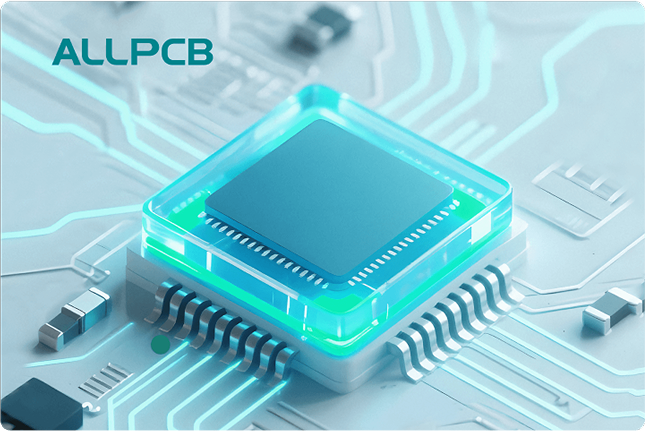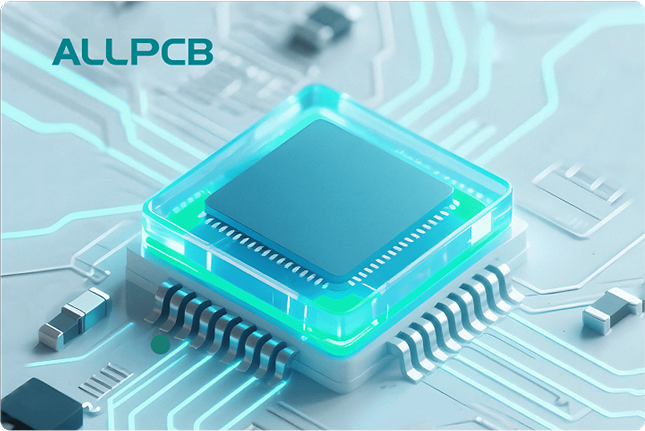If you're looking to understand conformal coating and its role in protecting printed circuit boards (PCBs), you're in the right place. Conformal coating is a thin, protective layer applied to PCBs to shield electronic components from environmental hazards like moisture, dust, and temperature extremes. In this guide, we'll dive deep into the benefits of conformal coating, how it guards against dust, its performance under varying temperatures, and its impact on PCB components. Whether you're an engineer or a hobbyist, this blog will provide actionable insights to help you make informed decisions for your projects.
What Is Conformal Coating?
Conformal coating is a non-conductive, polymeric film applied to the surface of a PCB. This protective layer "conforms" to the irregular shapes and contours of the board and its components, creating a barrier against environmental threats. Typically, these coatings are applied at a thickness of 25 to 250 micrometers, ensuring they are thin enough not to interfere with the board's functionality while providing robust protection.
The primary purpose of conformal coating is to enhance the reliability and longevity of electronic devices. It protects against moisture, dust, chemicals, and thermal shock, which can degrade components over time. By acting as a shield, conformal coating helps maintain the dielectric properties of the board, preventing short circuits and ensuring operational integrity.

Conformal Coating Benefits: Why It’s Essential for Your PCBs
One of the most significant advantages of conformal coating is its ability to extend the lifespan of electronic devices. Let’s explore the key benefits that make it a must-have for PCB protection:
- Moisture Resistance: Moisture is a common enemy of electronics, leading to corrosion and short circuits. Conformal coating acts as a barrier, preventing water or humidity from reaching sensitive components. This is especially critical for devices used in humid environments or outdoor applications.
- Protection Against Contaminants: Beyond moisture, conformal coating shields PCBs from chemicals, salt spray, and other corrosive substances. This is vital for industrial applications where exposure to harsh chemicals is frequent.
- Enhanced Dielectric Properties: The coating increases dielectric resistance, reducing the risk of electrical failures. For example, it can prevent current leakage between closely spaced components, even under high-voltage conditions.
- Vibration and Shock Resistance: In applications where PCBs are subject to mechanical stress, such as automotive or aerospace industries, conformal coating helps absorb vibrations and shocks, protecting delicate solder joints and components.
- Improved Reliability: By safeguarding against multiple environmental factors, conformal coating ensures consistent performance, reducing the likelihood of unexpected failures and costly repairs.
These benefits collectively contribute to the durability and performance of electronic devices, making conformal coating a critical step in PCB manufacturing for many industries.
Conformal Coating and Dust: Guarding Against Airborne Contaminants
Dust and other airborne particles pose a significant threat to PCBs, especially in environments like factories or outdoor settings. Over time, dust accumulation can lead to overheating by obstructing heat dissipation, and it may even cause short circuits if conductive particles settle on the board.
Conformal coating offers an effective solution by creating a sealed barrier over the PCB surface. This prevents dust from settling directly on components or penetrating into small gaps. While it doesn't make the board completely dust-proof, it significantly reduces the risk of dust-related damage. For instance, in a study of industrial control systems, boards with conformal coating showed a 40% lower failure rate due to dust contamination compared to uncoated boards.
To maximize protection against dust, the choice of coating material matters. Silicone-based coatings, for example, are known for their flexibility and ability to form a tight seal, making them ideal for dusty environments. Regular maintenance, such as gentle cleaning, can also complement the coating’s protective effects without damaging the layer.

Conformal Coating and Temperature: Performance Under Extremes
Temperature fluctuations can wreak havoc on electronic components, causing thermal expansion, contraction, and potential cracking of solder joints. Conformal coating helps mitigate these risks by providing thermal stability and insulation, ensuring components operate within safe temperature ranges.
Different types of conformal coatings are designed to withstand specific temperature ranges. For example:
- Acrylic Coatings: These are suitable for moderate temperature ranges, typically from -40°C to 125°C, making them ideal for consumer electronics.
- Silicone Coatings: Known for their excellent thermal stability, silicone coatings can handle temperatures from -65°C to 200°C, perfect for automotive and aerospace applications.
- Polyurethane Coatings: These offer a balance of thermal and chemical resistance, operating effectively between -55°C and 130°C.
- Parylene Coatings: With a temperature tolerance of up to 200°C or higher, parylene is often used in high-performance applications where extreme heat is a concern.
By selecting the appropriate coating based on the operating environment, you can ensure your PCB components remain protected even under harsh thermal conditions. For instance, in automotive electronics, where temperatures under the hood can exceed 150°C, silicone or parylene coatings are often chosen to prevent thermal degradation.

Conformal Coating and PCB Components: Compatibility and Protection
Conformal coating is designed to protect all elements of a PCB, including delicate components like resistors, capacitors, and integrated circuits. However, applying the coating requires careful consideration to ensure compatibility and avoid unintended consequences.
One key aspect is ensuring the coating does not interfere with the functionality of components. For example, connectors or switches that require physical contact may need to be masked during the coating process to prevent the layer from obstructing their operation. Similarly, heat-generating components like power transistors should be evaluated to ensure the coating does not trap heat, which could lead to overheating. In such cases, selective coating or using materials with high thermal conductivity can address the issue.
Another consideration is the application method. Common techniques include:
- Brushing: Ideal for small-scale or touch-up applications, offering precision but requiring skilled labor.
- Spraying: Suitable for larger batches, providing even coverage but necessitating proper ventilation and masking.
- Dip Coating: Ensures complete coverage for complex geometries but may result in thicker layers on certain areas.
- Selective Coating: Uses automated equipment to apply coating only to specific areas, protecting sensitive components while avoiding unnecessary coverage.
By tailoring the coating process to the specific needs of the PCB components, manufacturers can achieve optimal protection without compromising performance. For high-density boards with tightly spaced components, selective coating can prevent issues like bridging, where excess coating might create unwanted electrical connections.
Types of Conformal Coatings: Choosing the Right One
Not all conformal coatings are created equal. The choice of material depends on the specific requirements of your application. Here’s a breakdown of the most common types:
- Acrylic: Easy to apply and remove, offering good moisture resistance. Best for general-purpose applications with moderate environmental exposure.
- Silicone: Highly flexible and temperature-resistant, ideal for extreme conditions and applications requiring vibration dampening.
- Polyurethane: Provides excellent chemical resistance and durability, suitable for harsh industrial environments.
- Epoxy: Offers robust mechanical strength but is harder to rework, often used in rugged applications.
- Parylene: A vapor-deposited coating with superior barrier properties, perfect for medical and high-reliability devices but more expensive to apply.
Selecting the right coating involves balancing factors like cost, environmental conditions, and ease of application. For instance, while parylene provides unmatched protection, its higher cost might not be justified for low-budget consumer products where acrylic coatings suffice.
Challenges and Considerations in Conformal Coating
While conformal coating offers numerous benefits, it’s not without challenges. Understanding these can help you avoid common pitfalls:
- Application Defects: Uneven coating or air bubbles can compromise protection. Proper equipment and skilled operators are essential to achieve uniform coverage.
- Rework and Repair: Some coatings, like epoxy, are difficult to remove for repairs, potentially damaging the board if not handled carefully.
- Curing Time: Certain coatings require extended curing times or specific conditions (e.g., UV light or heat), which can slow down production.
- Cost: High-performance coatings like parylene can be expensive, impacting the overall budget of a project.
Addressing these challenges requires thorough planning, from selecting the right coating material to ensuring proper application techniques. Partnering with experienced PCB assembly services can also streamline the process and minimize errors.
How to Ensure Effective Conformal Coating Application
To maximize the benefits of conformal coating, follow these best practices during application:
- Clean the PCB Thoroughly: Remove any contaminants like flux residue or dust before applying the coating to ensure proper adhesion.
- Mask Sensitive Areas: Use masking materials to protect components that should not be coated, such as connectors or test points.
- Choose the Right Application Method: Select a method that suits the board’s design and production volume for consistent results.
- Monitor Thickness: Use tools like micrometers to measure coating thickness, ensuring it falls within the recommended range of 25-250 micrometers.
- Test for Coverage: After application, inspect the board under UV light (if using UV-curable coatings) to check for missed spots or uneven layers.
By adhering to these steps, you can achieve a reliable protective layer that enhances the durability of your PCBs.
Conclusion: The Importance of Conformal Coating for PCB Longevity
Conformal coating is a game-changer for protecting PCBs from environmental hazards like dust, moisture, and temperature extremes. Its benefits, from enhancing dielectric properties to preventing corrosion, make it an essential consideration for any electronic project. By understanding how conformal coating interacts with PCB components and selecting the right material for your specific needs, you can significantly improve the reliability and lifespan of your devices.
Whether you're designing electronics for consumer use or high-stakes industrial applications, conformal coating offers a proven solution to safeguard your work. With the right approach to application and material selection, you can ensure your PCBs perform optimally, even in the harshest conditions. Explore the possibilities of conformal coating to elevate the quality and durability of your next project.
 ALLPCB
ALLPCB







